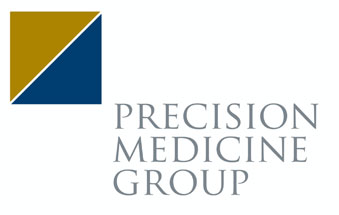The “Long-Term Stock Exchange” Secures its First Listing Commitments
In September 2020, a new stock exchange debuted! The “Long-Term Stock Exchange” (LTSE) is principles-based to prioritize long-term actions and promote transparency by requiring listed companies to detail and publish polices that offer shareholders and other stakeholders insight into how the company operates and plans to build its business for the long-term. Listed companies will have to comply with five underlying principles:
- Consider a broader group of stakeholders and the critical role they play in one another’s success;
- Measure success in years and decades and prioritize long-term decision-making;
- Align executive compensation and board compensation with long-term performance;
- Boards of directors should be engaged in and have explicit oversight of long-term strategy; and
- Engage with their long-term shareholders
By relying on these principles, the LTSE looks to attract companies that plan to create and innovate for generations, defining success more around long-term growth vs. day-to-day stock price, and investors who hold equity for longer, with decreased volatility.
Late last month, the LTSE gained its first two listing commitments, from Asana, a work management platform, and Twilio, a cloud communications and customer engagement platform. Both are expected to list on August 26, 2021 via a dual public listing of their common stock.
New Hedge Fund Launches Continue to Surge!
According to an article published last week in Bloomberg, the first quarter of 2021 saw the formation of 189 new hedge funds – the highest number since the end of 2017 which Hedge Fund Research attributes to:
Performance: The top decile of hedge funds gained 127% in the 12-month period ending in 1Q 2021; in 1Q 2021 alone, the top decile gained 30%.
Inflation: Investors are using strategies like equity hedge funds and event-driven funds to hedge against inflation. At the end of 1Q 2021, the greatest portion of industry assets (30.4%) were invested in equity hedge funds, followed by event-driven funds, with 27.5% of total industry assets.
Risk Aversion: As investors recover from the pandemic, they are taking more defensive positioning against the sort of risks that were overlooked prior to 2021. According to Heinz, this means that institutions that are allocating are still cognizant of risk, driving more capital inflows and the launch of additional funds.
Four Core Principles for Biotech Board Meetings:
Last month, Adam Koppel of Bain Capital published a blog post for RA Capital’s new RApport online communications hub, outlining four key principles that he believes help improve the board meeting experience:
- More slides is not always better: distilling a board deck into as few slides as necessary to convey strategy points is usually most effective.
- Focus board meetings on strategic discussions, not reviewing updates: spend time discussing issues where board-level discussion, advice or governance is needed, like capital formation, capital allocation, key strategic decisions, major business development activity, and any other major challenges that come up in the process of operating the company.
- Make, track and report progress toward transparent annual and multi-year goals.
- Use a slide at the beginning of every board deck to visualize a company’s core narrative, cash runway, financing plan and milestones together in one place: this helps create transparency around the question of how much runway is needed to get through the next value-creating event and sets the stage for thoughtful debate and discussion on capital formation and allocation.
June’s Biotech IPO Activity Locks in Record First Half
23 biopharma companies raised over $3.5B in IPO financings in the month of June 2021. The strength of the IPO market in June rescued 2Q 2021 from a slow start, with only 15 IPOs pricing in April and only eight in May. At the end of June, the total year-to-date biotech IPO count was at 89, which is the most seen in the first half year since BioCentury started tracking this data in 1994. The current annual record for biotech IPOs is 117 deals; at this rate, 2021’s IPO activity will surpass this record!
Vida Ventures Closes $825 Million Vida III Fund to Advance Transformative Biomedical Innovations
Last week, Vida Ventures announced the closing of Vida Ventures III on $825M in an oversubscribed fund.
Building on the success of its first two funds, Vida Ventures, along with its industry-leading team of scientific and strategic advisors, will aim to identify and invest in transformative biomedical innovations that lead to new areas of drug discovery and development, regardless of geography, stage of development or financing status.
Market Update:
The overall markets were stable this week, with the NASDAQ, DJI and S&P 500 closing flat. Even so, the VIX was up 23% this week, sitting just above 19.0 as of market close on 7/8. The biotech markets declined this week, with the NBI, XBI and BTK decreasing by 3%, 5% and 1%, respectively.
Following the trend of the past few weeks, biotech public capital markets have been highly active recently, with a handful of IPOs and follow-ons, including the following deals:
- IPOs: Acumen Pharmaceuticals ($160M), Aerovate Therapeutics ($139.8M), Alpha Teknova ($96M), CVRx Inc. ($144.9M) Elevation Oncology ($100M), GH Research ($160M), SIR client Graphite Bio ($238M), IDEAYA Biosciences ($80M), Miromatix Medical ($43.2M), Monte Rosa Therapeutics ($222.3M), SIR client Transcode Therapeutics ($25M)
- Follow-ons: Aligos Therapeutics ($83.6M), Anavex Life Sciences ($50M), BioXcel Therapeutics ($100M), Celcuity Inc. ($56.3M) Cerevel Therapeutics ($350M), SIR client Intellia Therapeutics ($690M), Kiromic Biopharma ($40M), Kymera Therapeutics ($223.5M), Nyxoah SA ($85.1M), Portage Biotech ($23M), Second Sight Medical Products ($57.5M), Theravance Biopharma ($100.5M), Zentalis Pharmaceuticals ($150.4M)
- SPAC Listings: SIR Client SAB ($118M), Pear Therapeutics ($400M)
In addition, there were numerous private financings, including:
- Abata Therapeutics (Series A, $95M); ArriVent Biopharma (Series A, $150M); Element Biosciences (Series C, $276M); Enveda Biosciences (Series A, $51M); Glycomine (Series B, $68M); ImmuneID (Series A, $50M); Insilico Medicine (Series C, $255M); Lyndra Therapeutics (Series C, $60.5M); Nerre Therapeutics (Series B2, £20M); Neurona Therapeutics (Series D, $41.5M); NeuVasQ Biotechnologies (Series A, €20M); Orum Therapeutics (Series B, $84M); Siranomics (Series E, $105M); Strand Therapeutics (Series A, $52M); TRexBio (Series A, $59M); Tvardi Therapeutics (Series B, $74M); VITA Therapeutics (Series A, $32M); Xenothera (Undisclosed, €20M)

